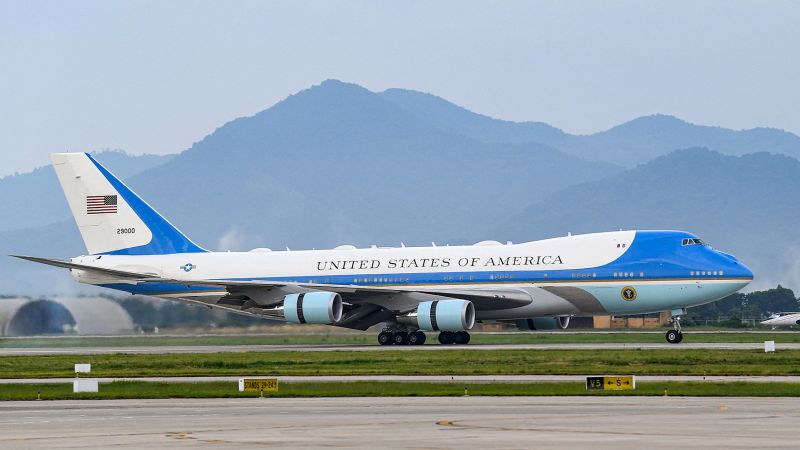CNN
—
Long-delayed next Air Force One jets from Boeing might now be delivered by 2027 — in time for President Donald Trump to use them, according to a top Air Force official.
While that’s still years behind the original delivery date of 2022, it’s one to two years earlier than Boeing had most recently predicted.
Trump has expressed anger at the delays, and he reportedly had been looking at buying a different jet to use on an interim basis.
News of the potential 2027 delivery came Wednesday from Darlene Costello, the Air Force’s acting acquisitions chief, who testified before the House Armed Service Committee about recent negotiations between the Air Force and Boeing.
“I would not necessarily guarantee that date, but they are proposing to bring it in ’27, if we can come to agreement on the requirement changes,” Costello said.
She was referring to contract requirements that are being loosened to get to that earlier date – such as the Air Force “relieving” Boeing of some some of the top-clearance security requirements for workers performing work on the aircraft, which has been blamed for some of the delays.
Boeing said it had no comment on Costello’s testimony.
Keeping Trump and the Air Force happy is critical for Boeing, which gets 42% of its revenue from US government contracts, according to its most recent filing.
Boeing’s $3.9 billion contract to replace the two Air Force One jets has become an expensive and embarrassing albatross. Boeing has reported losses totaling $2.5 billion already on the program, known as VC-25B, since it agreed to be responsible for what has become soaring cost overruns.
There are multiple reasons for the delay in delivery. After signing the original contract in 2017, Boeing began refurbishing two 747 jets in February 2020 that it had built for another customer but never delivered because of that customer’s bankruptcy — a process that in hindsight probably was more expensive and time consuming than if it had built from scratch.
And the onset of the Covid-19 pandemic, which started just weeks after Boeing began refurbishing the planes, caused significant additional delays.
The two jets now in use, which have the code letters VC-25A and carry the Air Force One designation when the president is on board, have been in service for nearly 35 years, starting during the term of President George H.W. Bush. Replacing the planes has long been a priority for Trump.
“I’m not happy with the fact that it’s taken so long,” Trump told reporters aboard Air Force One in February. “There’s no excuse for it.” He said he wouldn’t turn to Boeing’s European rival Airbus, but would consider buying a used 747 and having a different company refurbish it for use as Air Force One.
Soon after those comments Boeing CEO Kelly Ortberg told investors that he is “all in” on trying to speed up the delivery and praised suggestions made by Elon Musk, who visited the Texas facility where the work is being done in December on Trump’s behalf.
“The president is clearly not happy with the delivery timing,” Ortberg said at that time. “He’s made that well known. Elon Musk is actually helping us a lot in working through the requirements… to try to help us get the things that are non-value-added constraints out of the way, so we can move faster and the president those airplanes.”
Even before Trump took office for the first time in 2017, he complained about the cost of the Boeing contract and threatened to cancel an existing deal. In February 2018 he negotiated the current contract for two of the jets, which saved the Air Force $1.4 billion over the previous deal, the White House said at the time. He had requested that the aircraft be delivered by 2021.
The Wall Street Journal, citing people familiar with the situation, reported last week that the government has commissioned defense contractor L3Harris to overhaul a Boeing 747 formerly used by the Qatari government, with the aim to have it in service by this fall as an Air Force One jet. But that contract has not been announced by the government, and Costello was not asked about it during the hearing.
The challenge is not the basic jet, but what it takes to turn a run-of-the-mill Boeing 747 into the flying communications and command post fit for the president of the United States, said Richard Aboulafia, managing director at AeroDynamic Advisory, an aerospace consulting firm. They are supposed to be able to fly and protect its occupants from missile attack or even the shock waves of a nuclear blast.
“You can have a jet anytime,” he said. “But it takes a great deal of work to have encrypted communications and manage the military and federal government from anywhere around the world in any circumstance.”

